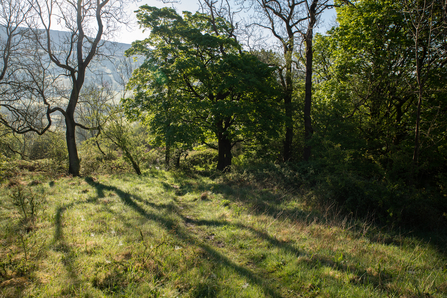Today is World Rewilding Day and we're celebrating what it means to us! Our living landscape was once a carpet of borderless green, but today many nature reserves and wild spaces are isolated – leaving wildlife unable to escape threats such as predators and food shortages. Our mission is to bridge those green gaps through natural rewilding, forming a network of safe havens across Derbyshire, restoring nature’s freedom to find new territory, and helping all our wildlife to flourish.
Our Thornhill Carrs Reserve is a perfect example of rewilding. This 30 hectare area of former farmland is a unique site, rare within The Peak District National Park for its low intervention, nature-led management. It is currently home to a fantastic array of wild wood land, scrub, beautiful wild flower meadows.
Keep reading to find out more about rewilding and click the link below to discover the projects we are working on:





